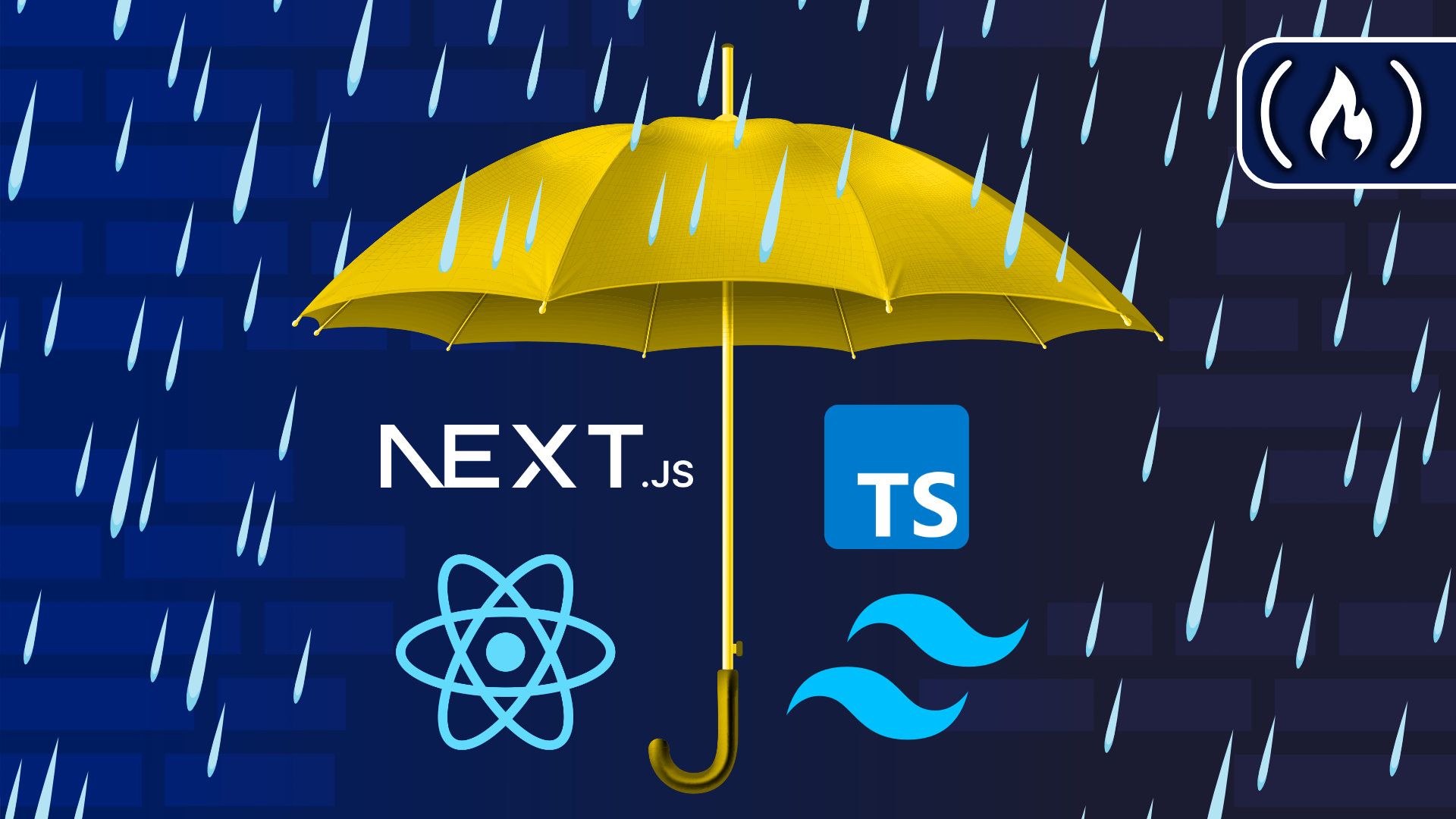We just published a great beginner's web dev tutorial on the freeCodeCamp.org YouTube channel. By the end of this tutorial, you'll have a solid understanding of several core technologies, including Next.js, Tailwind CSS, and TypeScript, all while creating a practical, real-world project.
Core Technologies Used
You will improve your skills in three core technologies.
Next.js
Next.js is a powerful React framework that enables developers to build server-side rendering and static web applications using React. It's known for its ease of use, efficient performance, and its feature-rich environment. Ideal for creating scalable applications, Next.js simplifies complex aspects like routing and API handling, making it an excellent choice for beginners looking to delve into React development.
Tailwind CSS
Tailwind CSS is a utility-first CSS framework that allows developers to style their applications directly within their HTML markup. Unlike traditional CSS frameworks, Tailwind provides low-level utility classes that you can combine to create custom designs without leaving your HTML. This approach makes it highly flexible and efficient, especially for rapidly building unique and responsive designs.
TypeScript
TypeScript is a superset of JavaScript that adds static types to the language. By using types, developers can catch errors early and enhance the code's readability and maintainability. TypeScript is gradually becoming a standard in the web development industry, especially for large-scale applications, due to its ability to provide a more structured and error-free coding environment.
Course Sections
The course is divided into a few sections. Here is what you will learn in each section.
Introduction
In the introductory section, we set the stage for our project. You'll learn about the overall structure of the course and the objectives we aim to achieve. We'll discuss the Weather App we're going to build and provide a brief overview of the technologies we'll use: Next.js for our React framework, Tailwind CSS for styling, and TypeScript for adding strong typing to our JavaScript code.
Navbar Component
The first hands-on part of the course focuses on creating the Navbar Component. This section teaches you how to create a functional and aesthetically pleasing navigation bar using Next.js and Tailwind CSS. You'll learn how to structure your components in Next.js and apply Tailwind CSS classes to style your Navbar, ensuring it's responsive and user-friendly.
API and Data Types Configurations
Here, we delve into integrating external APIs and configuring data types with TypeScript. You'll learn how to fetch weather data from a third-party API and how to define TypeScript interfaces to manage the data types effectively. This section is crucial for understanding how to handle data in a TypeScript environment and how to integrate external data sources in your app.
Current Day Section Components
This part of the course is dedicated to building the Current Day Section of the Weather App. You'll learn how to display real-time weather data for the current day, including temperature, weather conditions, and more. This section emphasizes the use of React components and state management in Next.js, showing you how to make your app dynamic and interactive.
Additional Details Component
In the Additional Details Component section, we focus on displaying extra weather information such as humidity, wind speed, and air pressure. This module will enhance your skills in creating more complex UI elements using Tailwind CSS and Next.js, ensuring that these components are both informative and visually appealing.
7 Days Forecast Data Section
Forecasting is a critical feature of any weather app. This section guides you through creating a 7-day weather forecast, teaching you how to manage and display an array of data effectively. You'll deepen your understanding of component structuring in Next.js and how to handle dynamic data in your application.
Search and Current Location Logic
The final section of the course covers the implementation of search functionality and current location logic. You'll learn how to allow users to search for weather data by city and how to automatically fetch weather data based on the user's current location. This part of the course will solidify your understanding of handling user input and working with location data in a web application.
Conclusion
By the end of this course, you'll have a fully functional Weather App and a deep understanding of how to use Next.js, Tailwind CSS, and TypeScript in a real-world project. Watch the full course on the freeCodeCamp.org YouTube channel (2-hour watch).
